- Home
- Ray Bradbury
Listen to the Echoes Page 7
Listen to the Echoes Read online
Page 7
The experience with Charles Laughton was incredible. Every afternoon I’d show up with new pages, and then we’d have vodka martinis. In between, Charles would stand on his hearth and declaim for me. He would declaim Shaw or Shakespeare. He was going to do King Lear in London. He would invite me over to his pool; we’d swim around. He said, “Ray, what do you think of this idea?” I said, “Charlie, you’re the expert. I’m an amateur.” He’d say, “Yes, but I need a ricochet board. You’re the ricochet board.” So we had this wonderful friendship. And he introduced me to Shaw and I fell completely in love, and I’ve never been out of love since.
The very first time I went to Disneyland, the year after it opened, was with Charles Laughton. I didn’t go sooner because I had heard they hadn’t finished building it, and I didn’t want to go when it was incomplete. So Charles Laughton came to me and asked if I would like to go. I remember riding on the Peter Pan ride and looking down on London and the House of Parliament and the London Bridge with Charles Laughton, of all people! We went on the Jungle Boat Ride and he started doing his interpretation of Captain Bligh. It was incredible. Oh my God, I loved him!
WELLER: And you knew Walt Disney. How did you meet him?
BRADBURY: I was Christmas shopping in a department store in Beverly Hills in 1964. All of a sudden, through the crowd of people, I saw Walt Disney coming near me. He had an armload of wrapped presents going up to his chin. I ran up to him and introduced myself. I said, “Mr. Disney, my name is Ray Bradbury, and I love you.” And he said, “I know your books.” I said, “Thank God!” and he said, “Why?” and I said, “Because someday soon I would like to take you to lunch.” And do you know what he said? He said, “Tomorrow!” Can you believe that? Who says that? “Tomorrow.” So I went to his office and we had lunch at a little card table right there. We talked about all of our loves—animation, architecture, World’s Fairs. He was wonderful. I had lunch with him three or four times before he died.
WELLER: How did you hear of his death?
BRADBURY: It was an incredible coincidence. I took my four daughters to Disneyland, and when I got home, Maggie said, “The news people have been calling all afternoon wanting to talk with you. CBS. NBC. They want to get a comment from you.” I said, “About what?” and she said, “They wanted to know if you knew that Walt Disney died today.” I was shocked. I asked Maggie, “What did you tell them?” and she said, “I told them, ‘You are not going to believe this, but right now Ray is at Disneyland with his daughters.’ ” What a tribute that was to Walt. To be at Disneyland the very day he died. Oh my God, I’m so proud of that. I wept when I found out he had died and said, “Oh, thank God I went there today!”
WELLER: You were also good friends with Federico Fellini. Tell me how that relationship started.
BRADBURY: In 1977, I wrote an article for the Los Angeles Times, reviewing a big book of Fellini photographs. Hundreds of pages of photographs of all of his films. It was beautiful. All you had to do was look at the photos and the films came back to you. So I wrote this long essay comparing him to Lon Chaney in The Phantom of the Opera and The Hunchback of Notre Dame and to Charlie Chaplin. So, a week later, I received a letter from Rome from Fellini. He wrote, “A friend of mine sent me this review. If you are ever in Rome, come see me.” So I wrote him back immediately and said, “Incidentally, we are going to be in Rome in August.” We were taking our daughter Alexandra over for her twentieth birthday.
WELLER: But you had met him prior to that, if I’m not mistaken.
BRADBURY: Yeah. Sometime in the early ’70s, he brought his film Satyricon over to Hollywood, and there was a big preview and a reception line to meet him. So I went through the reception line hoping that he would recognize my name. So I was introduced to him and nothing. Nothing. And I went away decimated. I wanted Fellini to know my name. I wanted him to know that I love him.
So the next night he was at UCLA with the film, lecturing the students. So at the end of the film, he answered questions from the students. I was in the audience, and I dared to ask him a question that is central to my life. I said, “Signore Fellini, I hear that when you make a film, you never look at the rushes. You never look at the dailies. And you make a whole film without looking at it. How can you do that?” He said, “I don’t want to know what I’m doing.” And this is how I have worked. This is the same way I provoke my psyche, my muse. When I get out of bed each morning, I say, I wonder what I did yesterday? And my creative self sits up like a cat, and cats don’t like to be ignored. If you pretend to walk away from a cat, it may just get curious and follow you. So an idea, then, if you neglect it, it will follow you. Fellini answered that question.
At the end of that evening, I went up to him again and I had a copy of Crónicas Marcianas, the Italian version of The Martian Chronicles, in my pocket. I introduced myself to him again and he said, “Ah! Ray Bradbury!” and I took out the book and gave it to him. And he knew the book. But we still hadn’t begun our friendship. At least I knew that he knew me. So a few years later I did the article in the Times and he wrote me. As soon as we got to Rome, I called him, and we got together for dinner. We had two or three dinners and lunches. We got together at the seaport with him one night and with Roberto Rossellini’s brother. He had all of his friends, and Maggie and me, down at the seaport. The light wasn’t exactly right in the restaurant, and Fellini moved us around to get the lighting on us better, and I said, “Federico, tell the sun to go down!” And he said, “Go down!” and the lights dimmed.
We spent an entire week together. We talked about films, music, and literature. On our last day we had lunch, and Fellini took me back to my hotel and we stood outside the hotel and he grabbed me and hugged me and kissed me and yelled at the heavens, “My twin! My twin!” And I wept, I was so happy.
WELLER: Did you see him many times after that?
BRADBURY: Yes, several times.
WELLER: He died in 1993. How did you find out?
BRADBURY: It was terrible, terrible. It was Halloween morning. I was sitting by the television and the flash came on. So I went around the house and threw out all the pumpkins and took down all the decorations. All of a sudden Halloween was too real.
WELLER: In recent years, you’ve lost a lot of friends, as well as your wife and brother. How have you handled this?
BRADBURY: The same way I handle all my problems—I get my work done. My personal telephone book is a book of the dead now. I’m so old. Almost all my friends have died, and I don’t have enough guts to take their names out of the book. So I’ve never buried them.
WELLER: How do you want to be remembered?
BRADBURY: The thing that makes me happy is that I know that on Mars, two hundred years from now, my books are going to be read. They’ll be up on dead Mars with no atmosphere. And late at night, with a flashlight, some little boy is going to peek under the covers and read The Martian Chronicles on Mars.
WELLER: When your wife passed away in 2003, you purchased a plot next to her at Westwood Memorial Park. Your gravestone is there, and you went in the summer of 2009 and stood over your own grave. How did that make you feel?
BRADBURY: I’d much rather be buried on Mars. Put my ashes in a tomato soup can, because that’s all I ate when I was a child. Bury me on the red planet. Place a tombstone there with my name and a listing of my most well-known books, Fahrenheit 451, The Martian Chronicles, The Illustrated Man, Dandelion Wine, and Something Wicked This Way Comes. And at the top of the tombstone I’d like there to be a little hole and underneath that it should read, “Place only dandelions here.”
chapter five
HIS OWN WORK
JONATHAN R. ELLER, PROFESSOR OF ENGLISH AND CO-FOUNDER OF the Center for Ray Bradbury Studies at Indiana University School of Liberal Arts, calculates that Ray Bradbury has published some 144 books and counting. This sizeable number includes fiction, nonfiction, books of poetry and essays, published film scripts, plays, children’s books, and graphic novels, as well as special
ty, limited-edition works and educational titles. Like the title of his in-the-works collection of short stories, Ray Bradbury is a “Juggernaut.”
Ever since he began writing stories on a toy-dial typewriter at the age of twelve (a Christmas gift from his parents in 1932), Bradbury has been wildly prolific. And while he has illuminated the origins of such classics as Fahrenheit 451 and The Martian Chronicles, much less is known about the influences behind a good many of his nearly 600 published short stories. Equally fascinating are the “making-of” stories behind the tales themselves.
WELLER: People always want to know, of all of your books, do you have a favorite?
BRADBURY: Those are my children, you see. It’s like picking a favorite among my daughters. I wouldn’t do that. Or my grandchildren. The others are going to hate me if I do that. So my stories have lives, and if I pick a favorite the others are going to hate me.
WELLER: Your wife once told me that you do have a favorite book, that you just won’t admit it, and it’s Dandelion Wine. How do you respond to this?
BRADBURY: Oh, I suppose that’s true. All my books are special to me in different ways, but Dandelion Wine is really a tribute to my grandfather, who I loved so much. That book is very personal. So much of it is my life, you see. So I suppose it could be my favorite.
WELLER: You also told me once several years back that you do have a favorite short story, “The Toynbee Convector.” Is this still true?
BRADBURY: It certainly is one of my favorites. The old man who builds the fake time machine and fools everyone into believing that he has seen the future and that we must do something to save ourselves is me.
WELLER: I know you love the story, “Colonel Stonesteel’s Genuine Homemade Truly Egyptian Mummy.” What are the origins of that story?
BRADBURY: The story represents the relationship between the two halves of myself. There’s the old man and the boy in me, and they talk to each other. I’ve done that many times. It occurs in Farewell Summer, the conversations between the old colonel from the Civil War and the boy. So in “Colonel Stonesteel,” the little boy is suffering from boredom. The old man wants to stop the young boy from being bored, and the next thing you know, he’s making that mummy for the boy. Then, when it’s finished, they put it out in the field to be discovered. And then the townspeople discover this mummy in the field, and it’s impossible! Suddenly, my God, they’re famous! People come from all over the world to see this mummy.
And so, finally, when the story gets to be too much trouble, the Colonel gives the mummy to the boy and says, “Put it away, there may be a day in your life when you need this mummy again.” The little boy says, “Colonel, I have a feeling I’ll never need the mummy,” and then he talks about being a writer. And he’ll write his stories, and he won’t need the mummy ever again. I love that story. It makes me cry because it’s my younger self talking to my older self. And I have my mummy put away and I’ve never had to bring it out. I have my stories. It’s a great idea. That’s where ideas come from.
WELLER: Your story “Any Friend of Nicholas Nickleby is a Friend of Mine,” from the collection I Sing the Body Electric, similarly examines the relationship between old and young.
BRADBURY: Same idea there. Again, it’s the old man talking to the boy, encouraging him to be a writer. That story was my tribute to Charles Dickens. A Tale of Two Cities is one of the greatest novels of all time. It’s pure poetry. It starts with poetry and ends with it. When I read that, Dickens became the center of my life and caused me to write my own prose poetry.
WELLER: In “The Kilimanjaro Device,” also from I Sing the Body Electric, you wrote about another of your favorite writers, Ernest Hemingway. What’s the story behind the story?
BRADBURY: When Hemingway killed himself, it was so terrible. It was such a shock. I didn’t know what to do with my sadness. A few months later I saw an article in the Wall Street Journal, I believe, about a reporter who encountered Papa on the road before he killed himself. The reporter saw Hemingway and recognized him and thought, “Papa, stay off the road, I don’t want you to get hurt.” This article gave me the idea of how I could save Hemingway. So I went down in my basement and wrote that story. After it was published, I received letters from all over the world from people saying, “Thanks for getting Papa off the road.”
WELLER: Another one of your very famous stories is “The Wonderful Ice Cream Suit.” What can you tell me about the origins of that tale?
BRADBURY: In the early to mid-1940s, my friend Grant Beach’s mother owned a tenement building at Figueroa and Temple streets in downtown LA. It’s a shame the building is gone today. I lived in and out of that tenement in my twenties, and I got to know a lot of the people there, and I wrote several stories about them. The women on the porches after a big party, like Cinco de Mayo, threw their dresses off the tenement to other women down below. So the dresses the women used during Cinco de Mayo became the clothing the young women who owned no dresses used the rest of the year. That’s where I got the idea for “The Wonderful Ice Cream Suit,” from the women throwing away their dresses.
WELLER: Wasn’t the short story “En La Noche,” from the collection The Golden Apples of the Sun, born of your experiences at the tenement as well?
BRADBURY: Yes. And that story is completely true. Mrs. Martinez was grieving that her son Joe went off to war. I knew the family very well. And when he came back from training camp, I helped put on a party for him up in the tenement, and Mrs. Martinez made food for everyone. Everyone in the entire tenement gathered in her apartment and ate enchiladas and what have you. And I led a conga parade through the tenement, up to the third floor and back down. I was the head of the conga line. There were twenty people behind me, and my friend Grant Beach was at the far end of the line. We celebrated Joe before he went off to war.
When he finally marched off to war, his mother started sobbing and moaning and saying, “Ohhhhh, Joe. Ohhhhh, Joe. My poor Joe.” I heard her saying this over and over. Everyone could hear her cries. And two men in the tenement, Villanazul and Gomez, were standing on the porch out front of the building, and they said, “How can we possibly make her shut up about her son Joe who has gone off to war?” And I said to Villanazul, “Why don’t you go up and scratch on her door? You know what to do.” And he said, “Yes, I’ll try.” So he went up and scratched on her door, and it worked. I wrote the story then. It’s a true story. That tenement gave me a lot.
WELLER: Didn’t the short story “I See You Never” also come from your experiences of your time down at Figueroa and Temple in Los Angeles?
BRADBURY: Grant Beach lived with his mother in the house next door to the tenement. One day, I was at their house, sitting at the luncheon table having an egg sandwich, and there was a knock at the door. When Mrs. Beach opened the door, this man leaned in and said, “Mrs. Beach, I have to go back to Mexico.” And Mrs. Beach looked at him. He was one of the renters at the tenement building she owned. There was a sheriff there that came to pick him up because he was an illegal. The sheriff was going to bring him to the border and then send him back to Mexico. Finally he said, “Mrs. Beach, I see you never.” I couldn’t believe it. I wrote those words down, and I wrote the story later that same day.
Several years went by, and I sent that story out and nobody wanted it. Then, one day in 1947, I got a letter from The New Yorker, from E.B. White’s wife, who was the editor, and she wrote me and said, “Dear Mr. Bradbury, I’ve read your short stories recently in several magazines, do you have anything you can send to The New Yorker?” I wrote back, I said, “I’m not sure this story will fit your magazine,” but I sent it to her anyway. She wrote back the next week saying they had accepted the story and would pay me three hundred dollars. It was my first sale to The New Yorker, and I never made another one. Thirty years went by, and they rejected hundreds of my stories.
WELLER: What is the story behind “The Drummer Boy of Shiloh”?
BRADBURY: I read an obituary in the newspaper about
a bit player, an actor in film, who died, oh God, many years ago, and it said his great-grandfather was the drummer boy at Shiloh. And I said, Oh my God, the sound of that is so beautiful. That’s the way I react to something as stirring as that. So I went to my typewriter and typed out “The Drummer Boy of Shiloh,” and three hours later the short story was finished. I love that story.
WELLER: Did you have to do any research of Civil War history?
BRADBURY: I went and looked up the battle of Shiloh to find out what season it occurred and whether there where peach blossoms there, because I had them falling on the drum.
WELLER: When I give talks at middle schools and high schools about you, the one story I am asked about more than any other is “All Summer in a Day.” What can you tell me about the origins of that story?
BRADBURY: Everyone loves it because it shows you how mean children are. All children are mean, and they love to read about themselves. Secretly, they love to lock the character Margot in the closet and let her out when it’s all over. When I lecture to students, I tell them, “I know the secret to this story, you are all mean little kids.” When we did that story on TV for PBS, the director had to provide an additional ending. You can’t end a TV program with something that negative. So in the program, all of the kids felt guilty about what they had done, and in the hour or two when there is sunlight, flowers appeared all over the planet, and the kids went out and collected the flowers and brought them to the girl and asked for her forgiveness.
WELLER: How about “Downwind from Gettysburg”?
BRADBURY: I was meeting with Walt Disney, and he took me to see the robotic Abraham Lincoln they were building for Disneyland. I looked at the robot, and I said to Disney, “What if someone rides into Disneyland and shoots Lincoln?” He said, “Why don’t you write that?” So I went home and wrote the story. Disney told me to do it. It appeared in Playboy.
WELLER: The story “Powerhouse” was an O. Henry Award finalist in 1948. It’s a very subtle, existential story about one woman’s realization of her place in the universe while she is in an old electrical power station. Where did you get the idea for it?

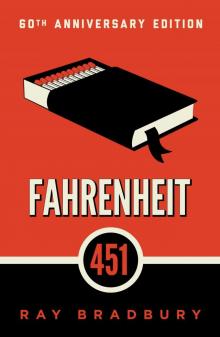 Fahrenheit 451
Fahrenheit 451 Zen in the Art of Writing
Zen in the Art of Writing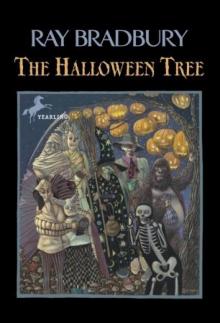 The Halloween Tree
The Halloween Tree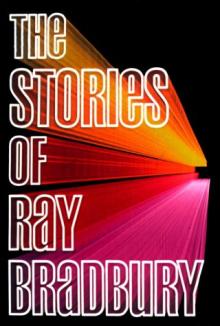 The Stories of Ray Bradbury
The Stories of Ray Bradbury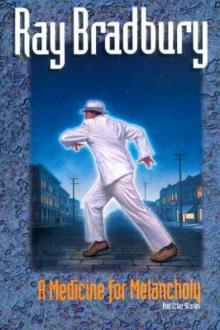 A Medicine for Melancholy and Other Stories
A Medicine for Melancholy and Other Stories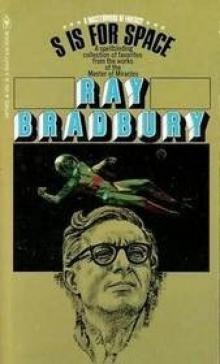 S Is for Space
S Is for Space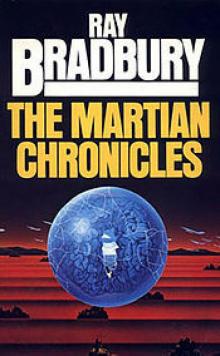 The Martian Chronicles
The Martian Chronicles Futuria Fantasia, Winter 1940
Futuria Fantasia, Winter 1940 Farewell Summer
Farewell Summer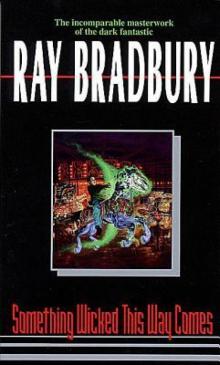 Something Wicked This Way Comes
Something Wicked This Way Comes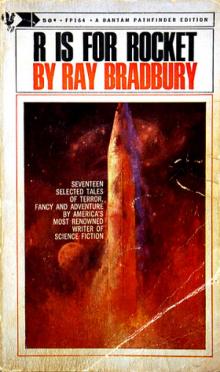 R Is for Rocket
R Is for Rocket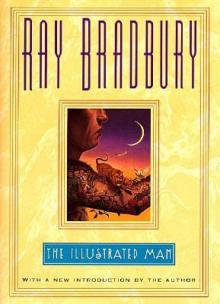 The Illustrated Man
The Illustrated Man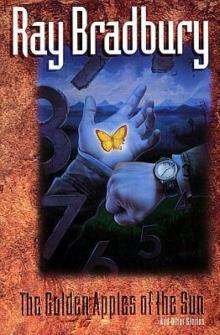 The Golden Apples of the Sun
The Golden Apples of the Sun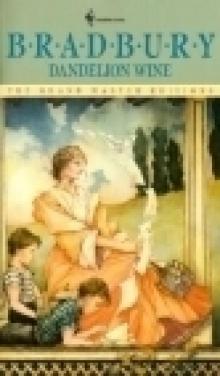 Dandelion Wine
Dandelion Wine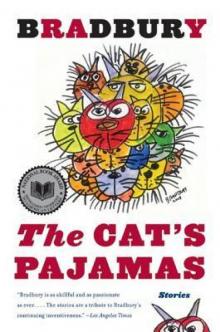 The Cat's Pajamas
The Cat's Pajamas A Graveyard for Lunatics
A Graveyard for Lunatics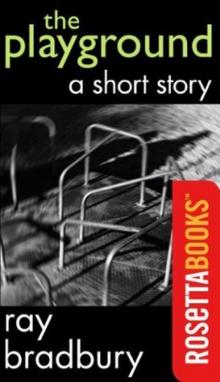 The Playground
The Playground We'll Always Have Paris: Stories
We'll Always Have Paris: Stories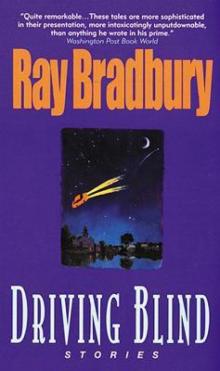 Driving Blind
Driving Blind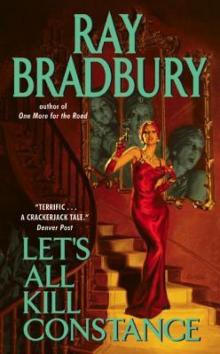 Let's All Kill Constance
Let's All Kill Constance The Day It Rained Forever
The Day It Rained Forever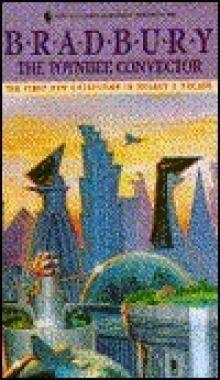 The Toynbee Convector
The Toynbee Convector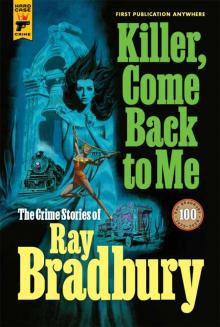 Killer, Come Back to Me
Killer, Come Back to Me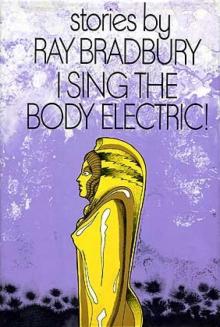 I Sing the Body Electric
I Sing the Body Electric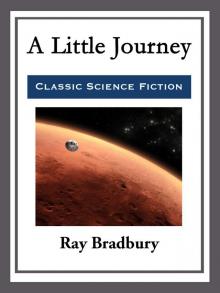 A Little Journey
A Little Journey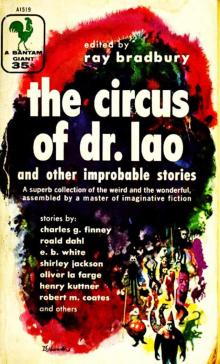 The Circus of Dr Lao and Other Improbable Stories
The Circus of Dr Lao and Other Improbable Stories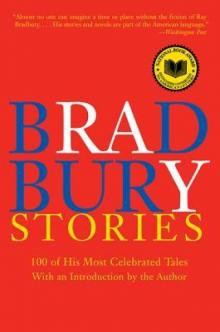 Bradbury Stories: 100 of His Most Celebrated Tales
Bradbury Stories: 100 of His Most Celebrated Tales From the Dust Returned
From the Dust Returned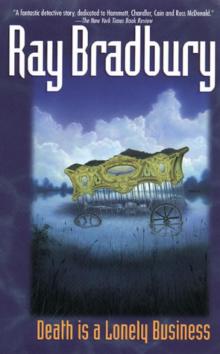 Death Is a Lonely Business
Death Is a Lonely Business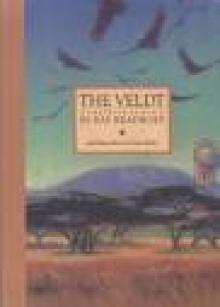 THE VELDT
THE VELDT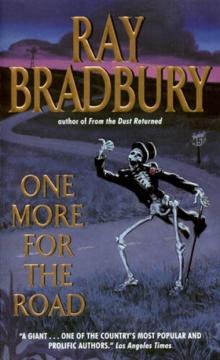 One More for the Road
One More for the Road Futuria Fantasia, Summer 1939
Futuria Fantasia, Summer 1939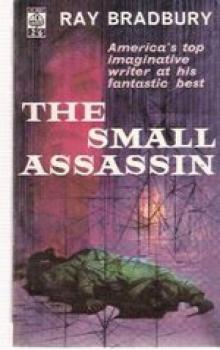 The Small Assassin
The Small Assassin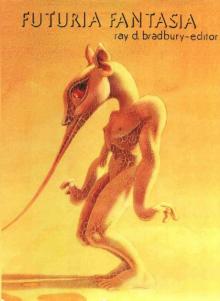 Futuria Fantasia, Fall 1939
Futuria Fantasia, Fall 1939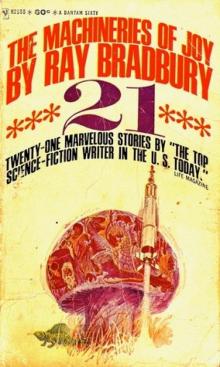 Machineries of Joy
Machineries of Joy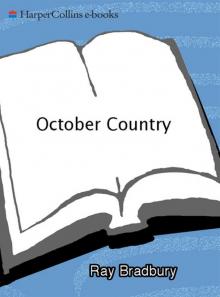 The October Country
The October Country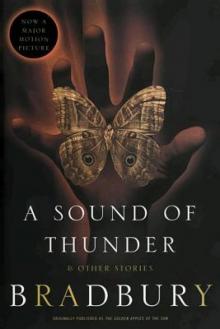 A Sound of Thunder and Other Stories
A Sound of Thunder and Other Stories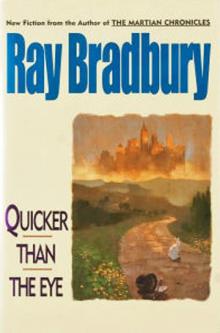 Quicker Than the Eye
Quicker Than the Eye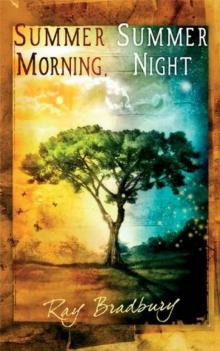 Summer Morning, Summer Night
Summer Morning, Summer Night Yestermorrow
Yestermorrow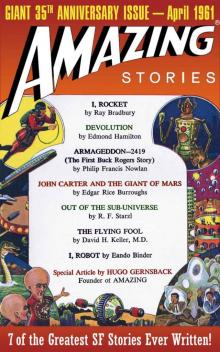 Amazing Stories: Giant 35th Anniversary Issue (Amazing Stories Classics)
Amazing Stories: Giant 35th Anniversary Issue (Amazing Stories Classics)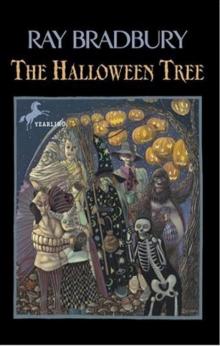 (1972) The Halloween Tree
(1972) The Halloween Tree Listen to the Echoes
Listen to the Echoes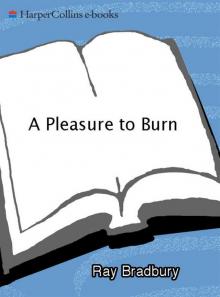 A Pleasure to Burn
A Pleasure to Burn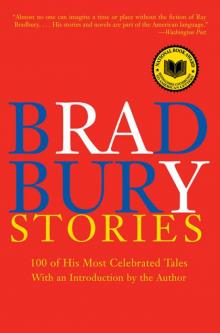 Bradbury Stories
Bradbury Stories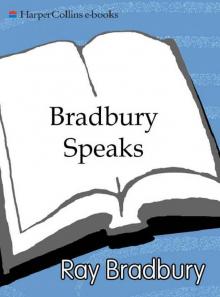 Bradbury Speaks
Bradbury Speaks Ray Bradbury Stories Volume 2
Ray Bradbury Stories Volume 2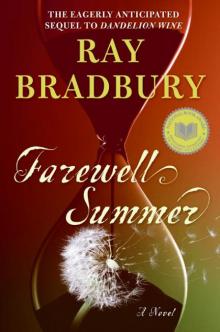 Farewell Summer gt-2
Farewell Summer gt-2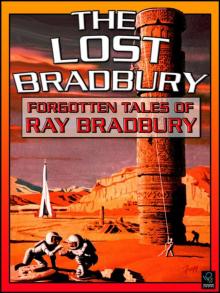 The Lost Bradbury
The Lost Bradbury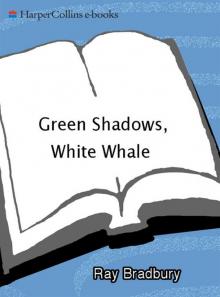 Green Shadows, White Whale
Green Shadows, White Whale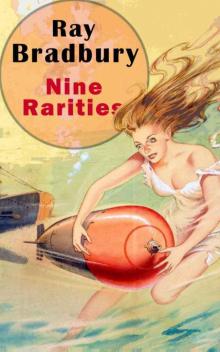 Nine Rarities
Nine Rarities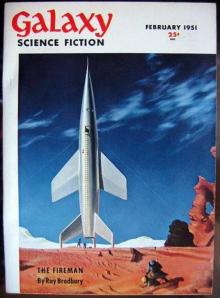 The Fireman
The Fireman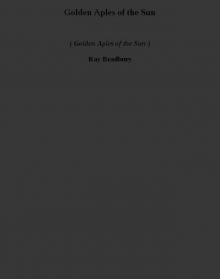 Golden Aples of the Sun (golden aples of the sun)
Golden Aples of the Sun (golden aples of the sun)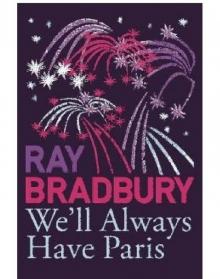 We'll Always Have Paris
We'll Always Have Paris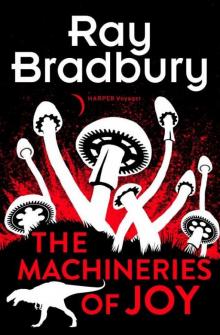 The Machineries of Joy
The Machineries of Joy A Graveyard for Lunatics cm-2
A Graveyard for Lunatics cm-2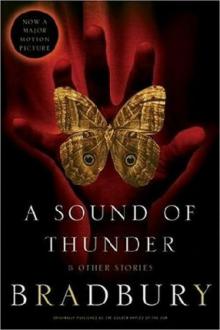 The Sound of Thunder
The Sound of Thunder Where Robot Mice and Robot Men Run Round In Robot Towns
Where Robot Mice and Robot Men Run Round In Robot Towns